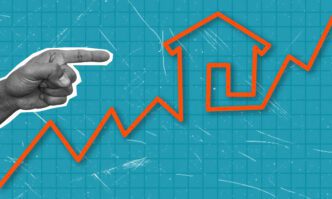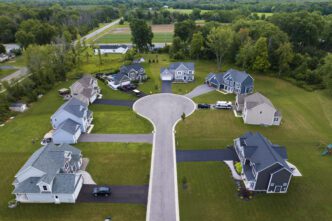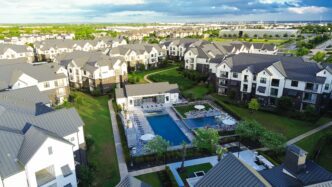Executive Summary
The Trajectory So Far
Assessing Risk and Value
Expert Predictions and Forecasts
The U.S. housing market is projected to experience a period of steady, modest home price appreciation from 2025 to 2029, according to the Q3 2025 Fannie Mae Home Price Expectations Survey (HPES). This outlook suggests a return to more sustainable growth rates following the rapid increases observed during the recent pandemic years, with experts anticipating an average annual growth rate of approximately 2.9% over the four-year period.
Expert Consensus and Divergence
The Fannie Mae survey, which gathers insights from a panel of real estate experts, provides a detailed breakdown of anticipated home price movements. While the overall average points to moderate gains, there is a notable split between optimistic and pessimistic forecasts, highlighting the inherent uncertainties in the market.
Analysts on the optimistic side foresee cumulative home price increases nearing 26% by the end of 2029, relative to 2024. Their projections are likely underpinned by beliefs in persistent underlying demand, a constrained housing supply, and favorable demographic shifts that continue to support price growth.
Conversely, the more pessimistic experts predict a significantly subdued cumulative growth of less than 5% by 2029. This group may be factoring in concerns about the sustained impact of higher interest rates, potential economic slowdowns, or a notable increase in housing inventory that could temper price appreciation.
The existence of such a wide range in expert opinions underscores the market’s complexity and the crucial role of localized economic conditions. Factors such as regional job growth and new construction rates are expected to create varied outcomes across different housing markets.
Historical Context for Future Trends
To contextualize the future predictions, historical data from Fannie Mae reveals distinct periods of home price growth. The pre-bubble era (1975-1999) saw an average annual growth of 5.1%, while the housing bubble (2000-2006) peaked at 7.7% before the bust (2006-2012) resulted in an average annual decrease of 4.8%.
The post-bust recovery (2012-2020) averaged 4.5% annual growth, accelerating to 8.7% during the “Covid Reshuffling” period (2020-2022). The projected average annual growth of 2.9% for 2025-2029 is notably lower than these recent periods, aligning more closely with the pace of the post-bust recovery rather than the extremes of the bubble or pandemic-driven surges.
This comparison suggests that experts anticipate a normalization of the market, moving away from the heightened volatility and rapid appreciation witnessed in recent years. This return to more stable growth is largely attributed to the stabilization of interest rates and efforts to manage inflation.
Key Factors Shaping the Market
Several critical factors are expected to influence the housing market’s trajectory from 2025 to 2029. These elements will collectively determine the pace and distribution of home price changes across the country.
Interest rates remain a significant driver, with the Federal Reserve’s monetary policy playing a pivotal role. A gradual decline in rates could enhance affordability and stimulate buyer demand, while sustained high rates would likely act as a deterrent. Concurrently, the chronic shortage of housing supply continues to underpin prices in many regions, although an uptick in new construction could help to rebalance the market.
Economic stability and consistent job growth are essential for robust housing demand, as secure incomes empower more individuals to pursue homeownership. Demographic trends, particularly the continued aging of the large Millennial generation into prime home-buying years, will also contribute to sustained demand.
Affordability remains a central challenge; while modest price appreciation could allow wages to catch up, rapid price increases or rising interest rates could exacerbate affordability issues. Furthermore, controlling inflation is crucial, as persistent inflation can erode purchasing power and lead to higher borrowing costs.
Implications for Market Participants
For prospective buyers, the forecast suggests that waiting for a significant market crash may not be a viable strategy. Instead, focusing on comfortable affordability, exploring diverse financing options like Adjustable Rate Mortgages (ARMs), and thoroughly researching local job markets and growth areas will be key amidst continued competition in desirable locations.
Sellers are likely to benefit from a market that continues to appreciate, indicating favorable conditions for listing properties. Realistic pricing, strong home presentation, and considering the long-term outlook for potential further gains are advised to attract serious buyers.
Existing homeowners can anticipate continued equity growth, albeit at a more moderate pace. Opportunities for refinancing may emerge if interest rates decline, allowing for potential savings over the life of their mortgages. Staying informed about local market trends and broader economic news will be beneficial for all homeowners.
Outlook
The housing market’s trajectory from 2025 to 2029 is characterized by a return to a more normalized environment. The period of extreme volatility and rapid price surges seen during the pandemic is expected to give way to steady, sustainable growth. While regional variations and economic shifts will persist, the consensus among experts, as reflected in the Fannie Mae HPES, points towards continued, moderate appreciation, offering a clearer path for informed decision-making across the real estate landscape.








